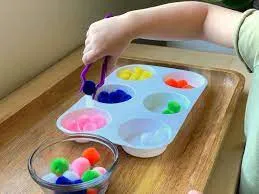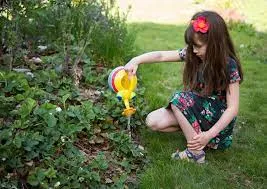You’re more than happy to impart cognitive abilities; all you need to do is do it. You’d prefer to employ everyday household items and look for specific activities that fit your busy schedule. And you’re seeking exercises to perform that would develop your 2-year-brain old’s that They would learn at preschool.
You’ve arrived at the correct spot.
I’ve provided a list of learning activities for 2 year olds that I used to do with my children when they were that age. These activities will undoubtedly keep your youngster occupied and interested.
I made sure that these exercises were doable for everyone. You won’t need to purchase many art supplies or scientific equipment. You’ll probably utilise the items repeatedly if you decide to buy something.
Additionally, these tasks are easy. We all have busy schedules, and we know that two-year-olds don’t exactly sit still for long periods. Indeed, they are free to move at their own pace.
Playdough

Make play dough balls, count each as you add them to a mound, and then pile them up. Make lengthy chains out of them to form the letters of your child’s name. By allowing her to pinch pieces from a big ball of play dough, you can help her develop her fine motor skills.
Matching Game

Your youngster should match two sets of the alphabet you have written on card stock or index cards. To avoid overloading her with all 26, start with a few at a time. In either case, make sure the letters are all the same, so she knows to match the letters by shape rather than colour.
Glue by Colour
Paper in various colours, such as blue, red, yellow, and green, should be cut into tiny pieces. Then, using various-coloured crayons, draw two circles on each separate sheet of paper. The circles on one sheet will be blue and red, while the rings on the other will be yellow and green.

Finally, have your youngster glue the separated parts into the circles with the corresponding colour (green bits into the green process, for instance).
Counting with dot Markers
Use dot markers to help your youngster practise their numbers. Print the numbers 1 through 10 along the side of two sheets of paper in landscape orientation. While counting with her, demonstrate how to colour the correct number of dots next to each letter.

Take a few toys or household items and try to see which ones float or sink. You can do this while taking a bath or adding water to a big bowl, water table, or kiddie pool. Find water-safe objects of varied weights so your youngster can observe various outcomes.
Letters in the Tub
My children learned more about letters and numbers while playing with a set of foam alphabet pieces. I would also demonstrate how to spell simple words correctly or how their names are formed using particular letters.
Trace and Write Letters and Numbers

Another entertaining way to introduce your youngster to the alphabet is through worksheets like those in my Letters and Numbers workbook. Before going on to smaller letters to be traced with a pencil or crayon, start with the more giant letters and encourage him to “trace” with his fingers.
Nature Scavenger Hunt
Please list the things you think your kid will find outside, then assist her in gathering her finds. Leaves, branches, rocks, stones, and flowers are a few examples. When you find what you were looking for, mark it off your list and bring a bag to store the things.

Assign her only one type of thing to find to make this game even more straightforward when you are out in nature. For instance, my son enjoyed discovering young pine cones, which were common in our neighbourhood park. Until we located almost all of them, we would pile pine cones at the base of trees.
Basting with Water
Show your youngster how to gather water by pinching the baster and dipping the end into a water basin using liquid droppers for kids like these.

Then ask her to spread her fingers to fill the baster with water. The water will then be released into another bowl once she presses the baster the last time. Additionally, this is an excellent technique to improve fine-motor abilities.
Tweezing Puffs
Have your youngster transfer cotton or puff balls from one basin to another using kitchen tongs (or tweezers for kids like these).

She can also sort the puff balls by colour or number if you use various coloured puff balls. For instance, group all the blues together or create piles of one, two, three, and so on.
Water Plants

Children enjoy watering plants. Help your youngster learn how to water indoor and outdoor plants using essential watering. You might also include this in her weekly chore list, so she has to do it every Saturday morning, for example.
Libraries
Many libraries offer children’s programmes, such as story times, magic shows, and arts and crafts. Get calendars from your local libraries so you can go to toddler-focused events. Additionally, coming to the library encourages you and your family to go often so you can take out books to read at home.
Sandbox or beach

Sand play at the beach or in a sandbox at your neighbourhood park may be a lot of fun for two-year-old development activities. Please bring your child some sand toys, and encourage them to build, play with water, and engage in sensory play.
Nature Walks

Take your kid on a nature walk or a new trail! You might investigate a nearby trek, a lagoon, or neighbouring forests. Bring a magnifying glass so she can examine any exciting findings.

